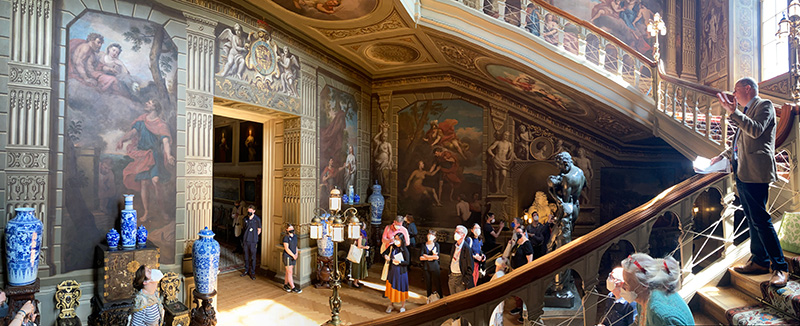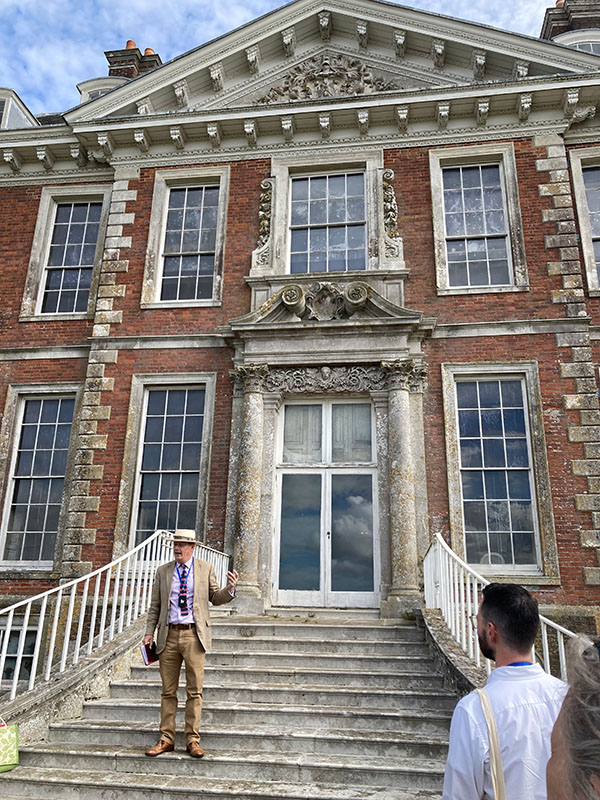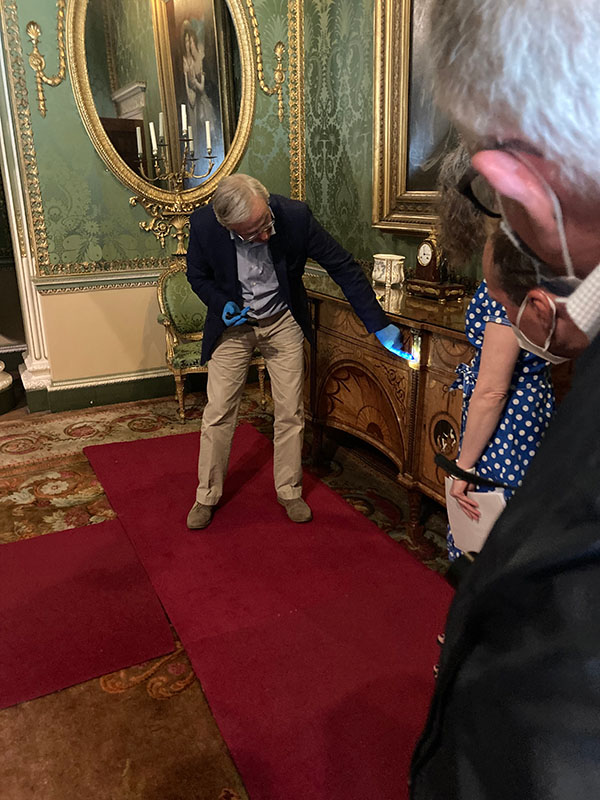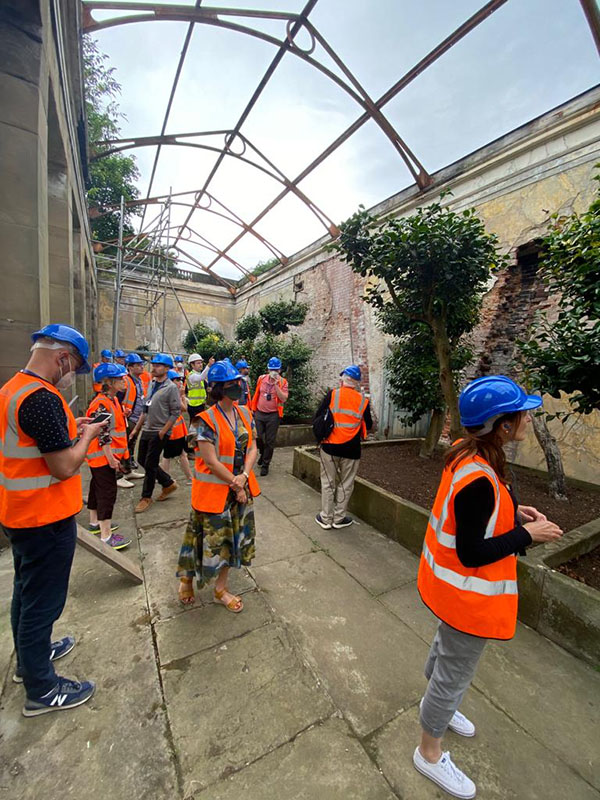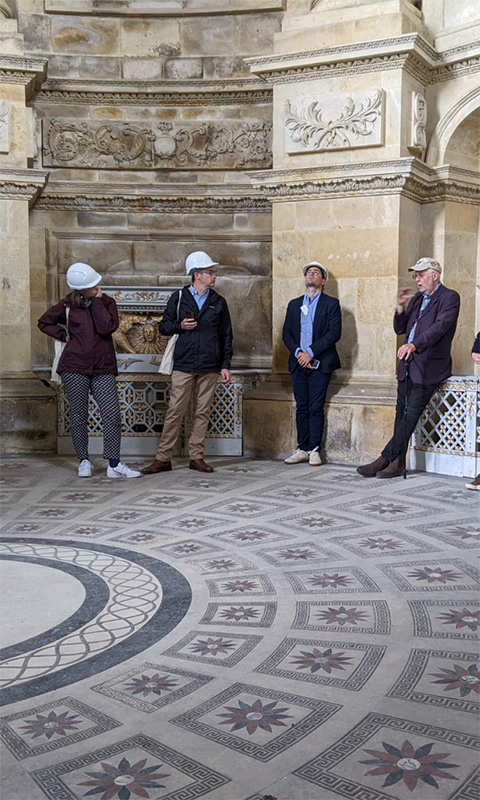Examining the English Country House during Attingham’s Summer School
by Devon Zimmerman
Following two years of pandemic delays, the Attingham Summer School proved itself to be the once-in-a-lifetime opportunity I had hoped it would be. The program’s uniquely ambitious itinerary—29 historic properties, museums, and gardens; 18 formal lectures; numerous in-situ guided tours; and countless peer-to-peer discussions, all in 17 days—has had a profound impact on my understanding of the English country house, and the history of the built environment more broadly. Further, the program supported lively discussions on the logistical challenges facing historic properties and museums as the pandemic continues to reverberate.
My research has focused on space in the modern built environment: how it is conceived, coded, and then mobilized to social and political ends over time. From Standen House to Hardwick Hall, Attingham provided a rare opportunity to visit a diverse range of spaces spanning five centuries, ranging across various locales, and reflecting a range of classes. The program reinforced my thinking of space in affectual terms. Experiencing each room’s scale, light, view, and smell is fundamental to understanding the strategies taken by interior decorative schemes that either elevate or alter these sensory effects.
I have also been particularly interested in tracing the totalizing, utopian visions of early-20th-century designers, while situating their projects in a longer history of the decorative arts. A project I am working on now looks at the “developed surface interior”—a drafting method that flattens all the walls of a room radially outwards from the ceiling. The drafting method was used prominently by British architects and interior decorators in the 18th century and found a revitalization in the practice of avant-garde figures from Theo van Doesburg to El Lissitzky. My thinking on the subject benefited from the study of developed surface interiors crafted by the likes of Robert Adam and then walking through the actual spaces in which those designs were realized.
Attingham brought together a tremendous cohort of colleagues. It allowed for robust, in-person conversations—sorely missed over the past two years—about the current hurdles faced by cultural institutions as the pandemic persists. Several discussion points became recurring themes on which I continue to reflect. The pandemic’s seismic impact on the retention and preservation of institutional knowledge was a notable example, as a generation of museum and heritage professionals—ranging from curators to docents—have stepped away from the field.
Starting a new curatorial position at the Ogunquit Museum of American Art, located on several acres of gardens, I also relished lively conversations about sustainability and visitor engagement. Numerous institutions, from West Dean to Chatsworth, are implementing meaningful efforts towards more environmentally conscious land management. Discussions opened eyes to questions of eco-friendly sourcing and resource usage, as well as managing visitor expectations for a certain unsustainable aesthetic model of garden display. Meanwhile, organizations such as Wentworth Woodhouse and Raby Castle demonstrated innovative community-centered initiatives to create lasting and stable visitorship. These are thoughts and lessons I will take with me as I tackle new and exciting ventures in my own research and curatorial work going forward.
I am grateful to the Decorative Arts Trust and its members for supporting my experience at the Attingham Summer School with a Continuing Education Scholarship, and I look forward to applying all I have learned to my current role and future projects.
Devon Zimmerman, PhD, is the Associate Curator of Modern and Contemporary American Art at the Ogunquit Museum of American Art.
About The Decorative Arts Trust Bulletin
Formerly known as the "blog,” the Bulletin features new research and scholarship, travelogues, book reviews, and museum and gallery exhibitions. The Bulletin complements The Magazine of the Decorative Arts Trust, our biannual members publication.
Click Images to Enlarge
Did you know that clicking on the images in Bulletin posts will allow you to get a closer look? Simply click on an image, and a larger version will open in a pop-up window.








